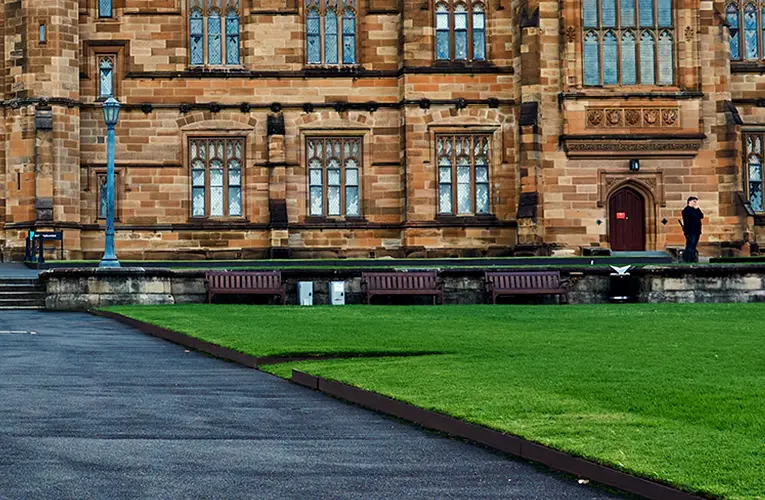Beyond Textbooks: Experiential Learning at Top US Universities
In today’s rapidly changing world, a purely theoretical education might not be enough. Top US universities are recognizing the importance of experiential learning, a pedagogy that goes beyond textbooks and lectures. This approach immerses students in real-world scenarios, allowing them to apply their knowledge, develop critical skills, and foster a deeper understanding of their chosen fields.
Why Experiential Learning Matters
Experiential learning offers a multitude of benefits for students:
- Enhanced Knowledge Retention: Engaging in hands-on activities helps students retain information more effectively compared to traditional classroom learning.
- Developing Essential Skills: Experiential learning opportunities allow students to hone critical skills like problem-solving, communication, teamwork, and adaptability – all crucial for success in the workplace.
- Increased Confidence: Successfully navigating real-world challenges builds confidence and a sense of accomplishment, motivating students to further explore their chosen fields.
- Improved Career Readiness: Experiential learning equips students with practical skills and experiences that are highly sought-after by employers.
Top US Universities Leading the Experiential Learning Charge
Many top US universities are incorporating innovative experiential learning programs into their curriculum:
- Massachusetts Institute of Technology (MIT): Renowned for its emphasis on innovation and entrepreneurship, MIT offers several experiential learning programs like the MIT Launch program, which helps students develop and launch their own startups.
- Stanford University: Stanford’s “Learning by Doing” philosophy is evident in its various experiential programs, including the Stanford Design Thinking process, where students tackle real-world problems through user-centered design.
- University of Pennsylvania (UPenn): UPenn’s Huntsman Program in International Studies and Business combines classroom learning with overseas internships and international travel, providing students with a holistic understanding of global business and diplomacy.
- New York University (NYU): NYU’s Tisch School of the Arts is a prime example of experiential learning, where students gain practical experience through acting in plays, directing productions, and participating in film projects.
- University of California, Los Angeles (UCLA): UCLA’s Community Programs Office connects students with volunteer opportunities in local communities. This allows them to apply their academic knowledge to social issues and develop valuable civic engagement skills.
These are just a few examples, and the variety of experiential learning opportunities offered by top US universities is vast. It can include:
- Internships: Gaining practical work experience under the guidance of professionals in a relevant field.
- Service Learning: Combining academic coursework with volunteer work in communities, addressing social needs while enhancing classroom learning.
- Study Abroad Programs: Immersing oneself in a different culture and academic environment, fostering global understanding and critical thinking skills.
- Undergraduate Research Opportunities: Working alongside faculty members on ongoing research projects, contributing to new discoveries and gaining valuable research experience.
Challenges and Considerations for Experiential Learning
While experiential learning offers significant benefits, there are challenges to consider:
- Resource Allocation: Creating and maintaining robust experiential learning programs requires dedicated resources, including faculty time, funding for internships, and infrastructure for field experiences.
- Accessibility: Ensuring all students have equal access to experiential learning opportunities, regardless of socioeconomic background, is crucial. This might involve financial aid programs and scholarships to support internships or study abroad programs.
- Quality Control: Maintaining a high standard of learning outcomes for experiential programs requires careful planning, effective supervision, and clear learning objectives for each experience.
The Future of Experiential Learning: A Collaborative Endeavor
The future of experiential learning lies in collaboration:
- University-Industry Partnerships: Collaboration between universities and industry leaders can create meaningful internship opportunities and ensure experiential learning programs align with real-world needs.
- Technology Integration: Leveraging technology like virtual reality (VR) and simulations can create new and accessible experiential learning opportunities for students.
- Focus on Global Citizenship: Experiential learning programs can be designed to foster global citizenship, encouraging students to address global challenges and develop intercultural competencies.
By overcoming challenges and fostering collaboration, top US universities can ensure that experiential learning continues to be a cornerstone of a well-rounded education. This will equip students with the skills, knowledge, and confidence to thrive in the ever-evolving world of the 21st century.
Beyond Textbooks, Lies a World of Experience
Experiential learning is not just a trend; it’s a transformative educational approach. By embracing this pedagogy, top US universities are preparing students to become not just knowledgeable graduates, but resourceful, adaptable, and engaged citizens ready to make a positive impact on the world. So, the next time you consider studying at a top US university, look beyond the rankings and delve into the experiential learning opportunities they










